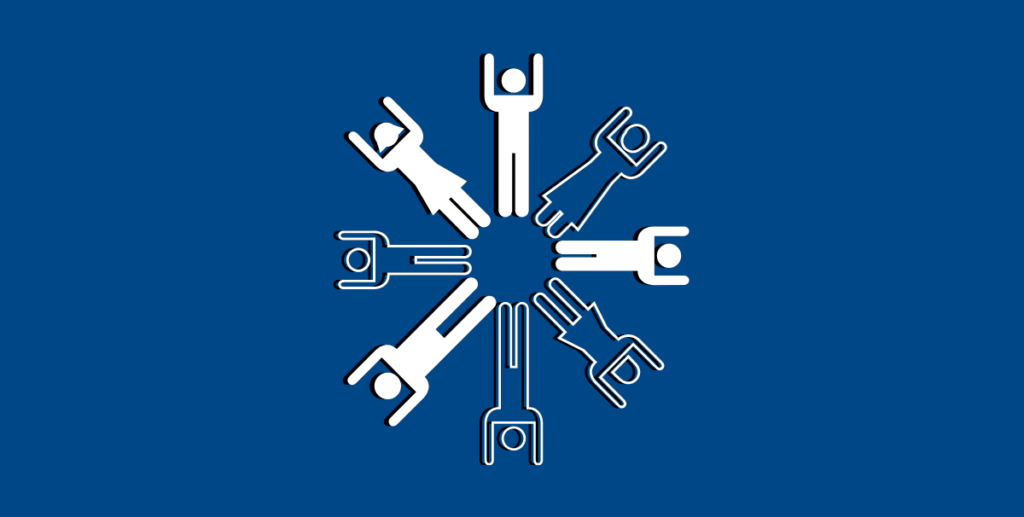Case Studies
⚠️ The selected journalistic initiatives make up the sample of cases analysed in the JoIn-DemoS project. This is not a ranking of the most innovative media, but a glimpse of the examples defined as innovative in different areas according to the project's methodology.

AI Journalism
The uses of artificial intelligence for journalism are varied: the automatic and massive production of text-based news, the automated creation of graphics and infographics, the processing and summarising of videos, the reconstruction of voices for podcasts, or the modelling of user propensity to pay are some examples. Moreover, it is also a relevant innovation internally, generating links between journalists and technicians outside the media

Audio/Podcast
Innovation that emerges as the recovery of the audio format in a digital ecosystem in which its consumption offers new conveniences. The new technological possibilities bring the media greater audience figures, sound options and monetisation possibilities. The importance of niche, authorship, serialisation, a sense of intimacy with the community and on-demand consumption are highlighted as factors in which podcasts tend to differentiate themselves from traditional radio. It also noted the emergence of aggregator platforms and podcast producers

Branded Content
An evolution of the traditional advertorials without the need to make direct reference to the brand in the text, but with content that by theme or approach fits with the values of the sponsoring company. Characterised in a careful and visually attractive format, it offers added journalistic value to the audience. This includes the organisational changes that the development of these formats generates in companies, like the creation of agencies within the media

Citizen Participation
This label encompasses all the initiatives and tools that citizens have to engage in journalistic practice. This participation can be seen in many facets, for example, the involvement of readers in finding topics, the dialogue between journalists and their audience, but also the possibility that everyone can now publish themselves and thus act as an agenda-setter. Citizen participation makes some tasks easier and faster for journalists and allows the media to better understand their audience

Collaborative and Investigative Journalism
This category includes collaboration between news organizations, at national and international level, for the development of major journalistic investigations that require substantial personal and technical resources for their production and distribution. This is an innovation because journalism has traditionally been characterised by an individualistic culture of protecting exclusives, even at the intra-organisational level. Journalistic collaboration breaks with these dynamics and has made it possible the development of valuable news work with a social impact

Constructive/Slow Journalism
This innovative form of journalism focuses on the search for long-term solutions to problems that affect society as a whole, takes a broad perspective and avoids sensationalism and negativity. This category also includes the new trends in slow journalism that advocate for moving away from noise and immediacy to focus on long-form, thoughtful stories.

Corporate Culture
In the last few years, organizational attitudes and principles in the journalistic media have been progressively renewed and redefined. Corporate culture has evolved to make a more transparent journalism that puts in the effort to adapt more quickly to new conditions and possibilities emerging from digitalization, for example, deciding whether to go online or mobile first and dealing with the loss of the gatekeeper function or even opinion journalism

Data Journalism
Data journalism represents an innovative intersection between journalism, statistics and databases. Journalists, through different mechanisms, find stories contained in large data sets and develop simple visualisations that convey this information in a way that is understandable to the audience. The creation of specific data journalism units and sections in the media also stands out

Diversity and Inclusion
Media initiatives can help disseminate and establish diversity and inclusion aspects and thus fulfil the needs for the representation of different groups. This innovation refers to diverse newsrooms as a prerequisite for a more balanced and realistic representation of society, as well as the production of content with a focus on race, gender, migration background and representatives of social minorities

Donations and Crowdfunding
This category comprises two of the most popular new forms of alternative funding that have emerged to mitigate the decline in advertising revenue. Crowdfunding and donations involve raising money from the users of the media, which ensures a source of income to start up or maintain a project in an independent manner, away from possible influences from advertisers or other sponsors

Editorial Quality Management System
Assurance tools and instances have been systematically applied during the production of editorial contributions with the aim of innovating and improving the quality of journalistic products. This category includes mechanisms such as editorial core documents, editorial meetings, briefings, research, acceptance processes, feedback or audience evaluations

Engagement on the Basis of Data
News organizations attempt to offer their audiences a consumer experience based on their interests and habits. The collection of user data and its subsequent processing to segment the audience and to offer different possibilities for the same product makes it possible. This category includes both the personalisation of advertising and of news content in digital media

